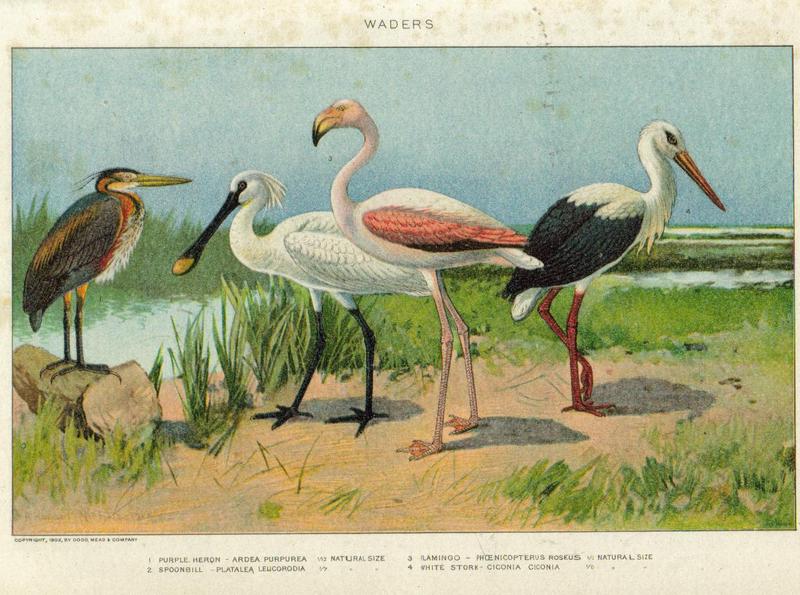|
purple heron (Ardea purpurea), common spoonbill (Platalea leucorodia), greater flamingo (Phoenicopterus roseus), white stork (Ciconia ciconia)
| 제목: | purple heron (Ardea purpurea), common spoonbill (Platalea leucorodia), greater flamingo (Phoenicopterus roseus), white stork (Ciconia ciconia)
| | 올린이: | Wiki Photos (---@---.---)
| |

| 해상도: 1248x928
파일크기: 229308 Bytes
등록시간: 2017:03:07 00:02:20
|
Description
Painting
Date 1902
Source New International Encyclopedia https://commons.wikimedia.org/wiki/New_International_Encyclopedia
Author Dodd, Mead and Company https://commons.wikimedia.org/wiki/Dodd,_Mead_and_Company
Source: https://commons.wikimedia.org/wiki/File:NIEdot374.jpg
The purple heron (Ardea purpurea) is a wide ranging species of wading bird in the heron family, Ardeidae. The scientific name comes from Latin ardea "heron", and purpureus, "coloured purple". It breeds in Africa, central and southern Europe, and southern and eastern Asia.
The Eurasian spoonbill or common spoonbill (Platalea leucorodia) is a wading bird of the ibis and spoonbill family Threskiornithidae. The genus name Platalea is from Latin and means "broad", referring to the distinctive shape of the bill, and leucorodia is from Ancient Greek leukerodios "spoonbill", itself derived from leukos, "white" and erodios "heron".
The greater flamingo (Phoenicopterus roseus) is the most widespread species of the flamingo family. It is found in Africa, on the Indian subcontinent, in the Middle East and southern Europe.
The white stork (Ciconia ciconia) is a large bird in the stork family Ciconiidae. The two subspecies, which differ slightly in size, breed in Europe (north to Finland), northwestern Africa, southwestern Asia (east to southern Kazakhstan) and southern Africa. |
^o^
동물그림창고 똑똑전화 누리집
^o^
|
|